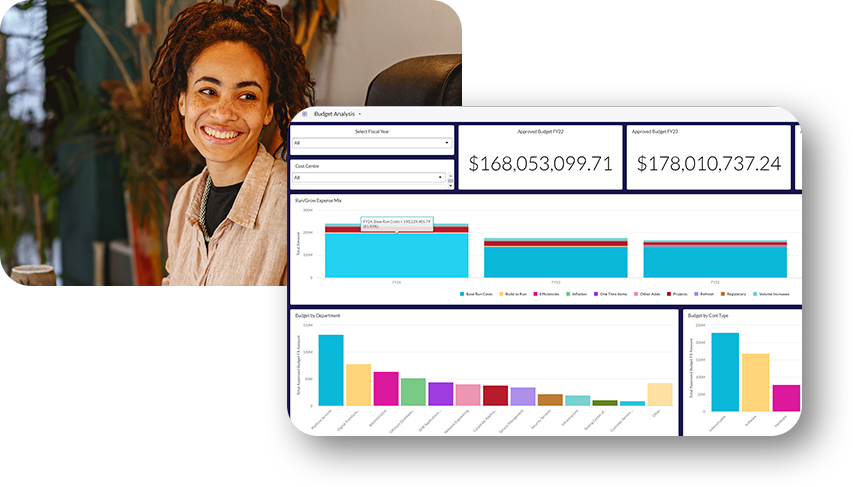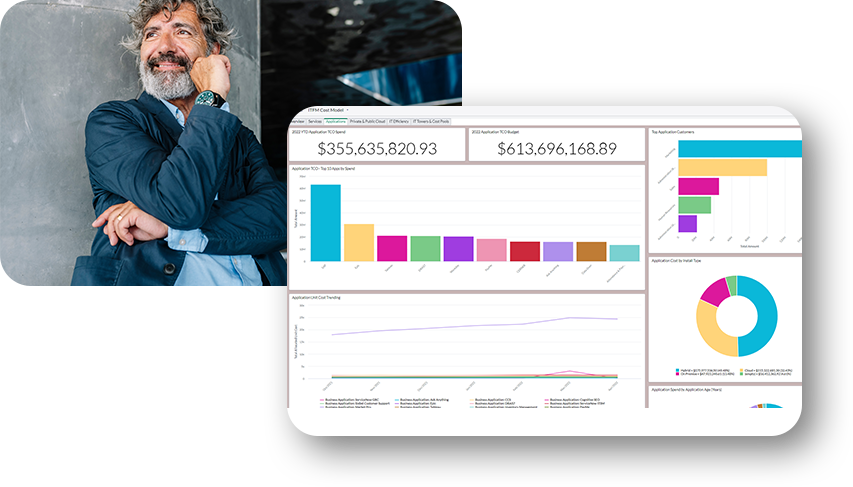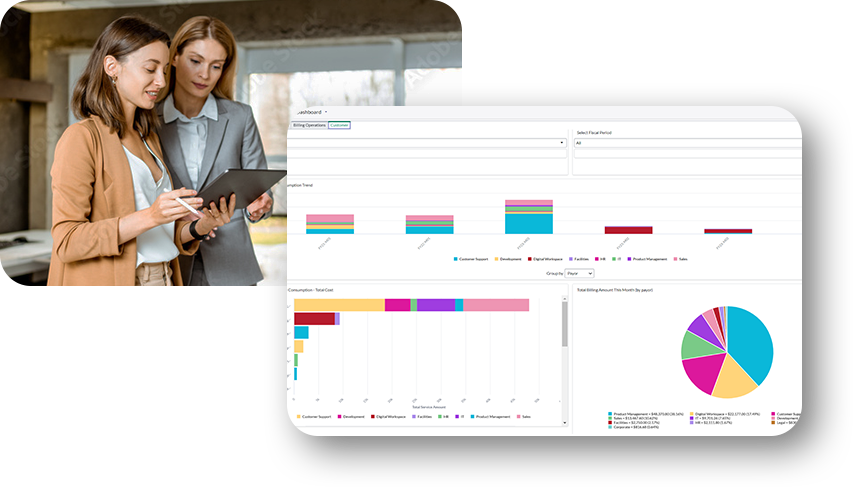Manage Your Technology Investments
Everything from budgeting to cost modeling and showback/chargeback
Why IT Financial Management?
Because the business expects value from its technology investments.
Tell a story they care about, delivered natively on ServiceNow.
END-TO-END IT FINANCIAL PLANNING
Build a Budget Everyone Understands
Improve forecasting accuracy, manage variance, and justify funding requests.
Explore Solution
COST MODELING BUILT YOUR WAY
Know Your IT Spend & What It Delivers
Cut redundant expenses, balance your app portfolio, and optimize IT spend.
Explore Solution
REMIND THE BUSINESS IT ISN’T FREE
Engage & Align Technology Consumers
Communicate IT usage, execute showback and chargeback, and recover costs for any service.
Explore Solution
Goodbye, spreadsheets
Ditch the old-school processes for automated workflows and smarter financial decision-making.
So long, point solutions
Drop expensive, awkward integrations and start managing your IT spend 100% natively on ServiceNow.
Turn ITFM Chaos Into Clarity
Learn how our applications simplify and centralize IT Financial Management for any organization.

How Campbell’s Automated & Centralized IT Budgeting on ServiceNow
What would 65% faster annual financial planning mean for your organization?

ITFM Knowledge Base
Proven Optics Acquires CloudGenera
The acquisition enhances the value that Proven Optics’ customers derive from their investment in ServiceNow as a strategic platform.

Powerful Product + Powerful Platform = Powerful Results
Powerful Product – The Proven Optics Financial Management Application Suite Point solutions are dead and the future is here. At Proven Optics, we are redefining IT Financial Management with scalable […]

ServiceNow’s Load Data Functionality
We often receive questions revolving around how we bring data onto the ServiceNow platform to utilize as part of our process for budgeting, forecasting, cost modeling, invoicing, or chargeback. One […]

Senators Want Planning for Federal Legacy IT Replacement
Senators Maggie Hassan (D-NJ) and John Cornyn (R-TX) recently introduced a bill that aims to reduce the Federal government’s reliance on obsolete and outdated IT by requiring Federal agencies to […]
